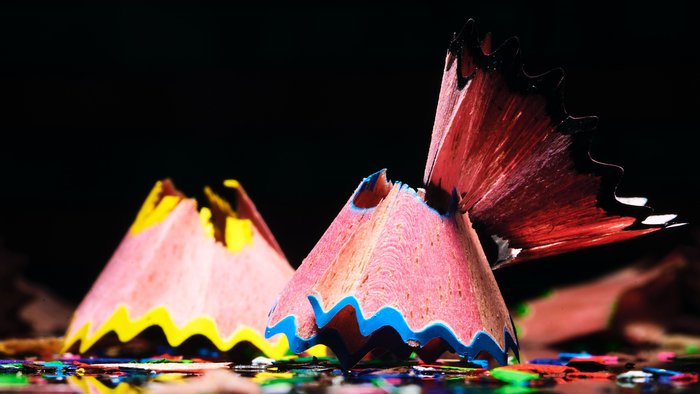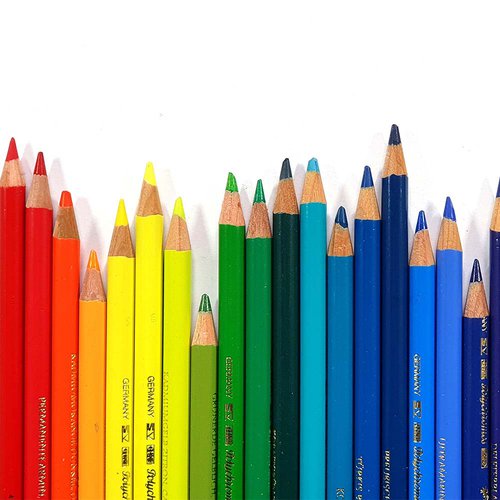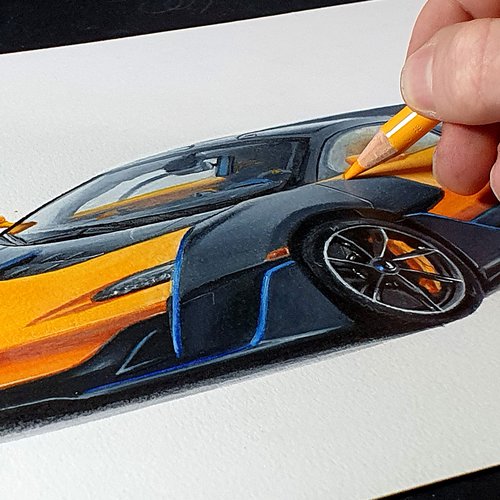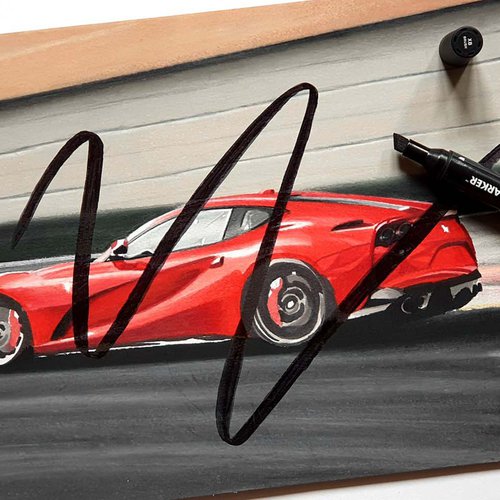How to Prevent Colored Pencil from Breaking When Sharpening

Sharpening colored pencils might seem like a simple task, but if you've ever had a pencil break on you, you know it can be quite frustrating.
As someone who's been working with colored pencils for years, I've learned a few tricks along the way to help prevent breakage and get the best results. You can also simply invest in a set of quality colored pencils to avoid the pencils from breaking when sharpening.
In this article, I'll share my favorite tips for sharpening colored pencils without breaking the lead. Let's dive in!
How to Prevent Colored Pencils from Breaking During Sharpening?
1. The Importance of Using a Sharp Blade
First things first, you've got to use a sharp blade when sharpening your colored pencils. A dull blade can cause the lead to crumble or break. Here are a few tips to keep your manual sharpener sharp or replace the blade in a mechanical sharpener:
- Manual sharpener: Clean it regularly to remove pencil shavings and debris. You can use a small brush or an old toothbrush to clean the sharpener.
- Mechanical sharpener: Replace the blade when you notice it's becoming dull. Most models have replacement blades available, so be sure to check the manufacturer's guidelines.
2. The Risks of Over-Sharpening
Over-sharpening your colored pencils can make them fragile and prone to breaking. So, how do you know when your pencil is sharpened enough? Here are a few tips:
- Aim for a medium-length point: A pencil with a too-long point is more likely to break. Aim for a medium-length point that's not too short or too long to prevent your pencil from being too fragile. But if you want it to be sharper, sharpen it very carefully.
- Check the lead: The lead should be visible and evenly sharpened around the circumference of the pencil.
3. The Importance of Gentle Pressure
Applying gentle pressure when sharpening your colored pencils is key to preventing breakage. Here are some tips on how to hold and sharpen your pencils with care:
- Hold the pencil firmly but gently: Don't squeeze the pencil too hard, as this can cause the lead to break.
- Turn the pencil slowly while sharpening: This ensures that the lead is sharpened evenly and helps prevent breakage.
4. Choosing a Good-Quality Mechanical Sharpener
Mechanical sharpeners can be a great choice for colored pencils because they provide consistent sharpening results. Here are some tips for selecting a high-quality mechanical sharpener:
- Look for adjustable settings: Some sharpeners have settings for different pencil diameters or point lengths, which can help you achieve the perfect sharpness.
- Choose a sharpener with a gentle motor: A sharpener with a gentle motor will be less likely to cause breakage.
5. Freezing Colored Pencils
Here's a weird alternative to the previous methods. Did you know that freezing colored pencils can make them less prone to breaking during sharpening? Here's how to do it:
- Place your pencils in a plastic bag: This will protect them from moisture.
- Freeze them for 1-2 hours: This will harden the lead, making it less likely to break.
- Sharpen your pencils while they're still cold: The lead will be easier to sharpen, and you'll have fewer breakages.
This technique is especially helpful when working with soft or delicate colored pencils.
The Differences Between Student-Grade and Artist-Grade Colored Pencils
When it comes to sharpening and breakage, there are noticeable differences between student and artist-grade colored pencils.
Student-grade pencils usually feature thinner leads and wooden barrels, which unfortunately makes them more prone to breakage. Additionally, the lower quality of the lead can cause it to snap or crumble during sharpening, making the process more challenging.
Artist-grade colored pencils, on the other hand, are typically less prone to breakage, thanks to their thicker leads and protective wooden barrels. These pencils often have their leads glued securely to the barrel, providing extra stability and reducing the risk of breakage. Furthermore, the high-quality leads used in artist-grade pencils are more resilient, which contributes to a smoother sharpening experience. To top it off, the wooden barrels of artist-grade pencils are sometimes made of softer wood, which allows for a more comfortable and effortless sharpening process.
Common Sharpening Mistakes to Avoid
Even experienced artists can make mistakes when sharpening colored pencils. Here are some common mistakes to avoid:
- Applying too much pressure: As mentioned earlier, applying gentle pressure is key to preventing breakage.
- Using a dull blade: Always ensure your sharpener's blade is sharp to avoid damaging your pencils.
- Over-sharpening: Remember that a medium-length point is ideal to prevent your pencils from becoming too fragile. If you want them to be sharper, sharpen them very carefully.
Additional Tips and Tricks for Sharpening Colored Pencils
Here are some creative and useful tips for sharpening colored pencils that I've picked up over the years:
- Using sandpaper or nail files: If you don't have a sharpener handy, you can use sandpaper or a nail file to gently sharpen your pencils. This technique can also be used for fine-tuning your pencil points.
- Using a piece of paper: When using a manual sharpener, place a small piece of paper between the pencil and the sharpener's opening. This can help protect the tip of the pencil and provide a smoother sharpening experience.





Be the first to comment!
Comments
There are no comments yet.